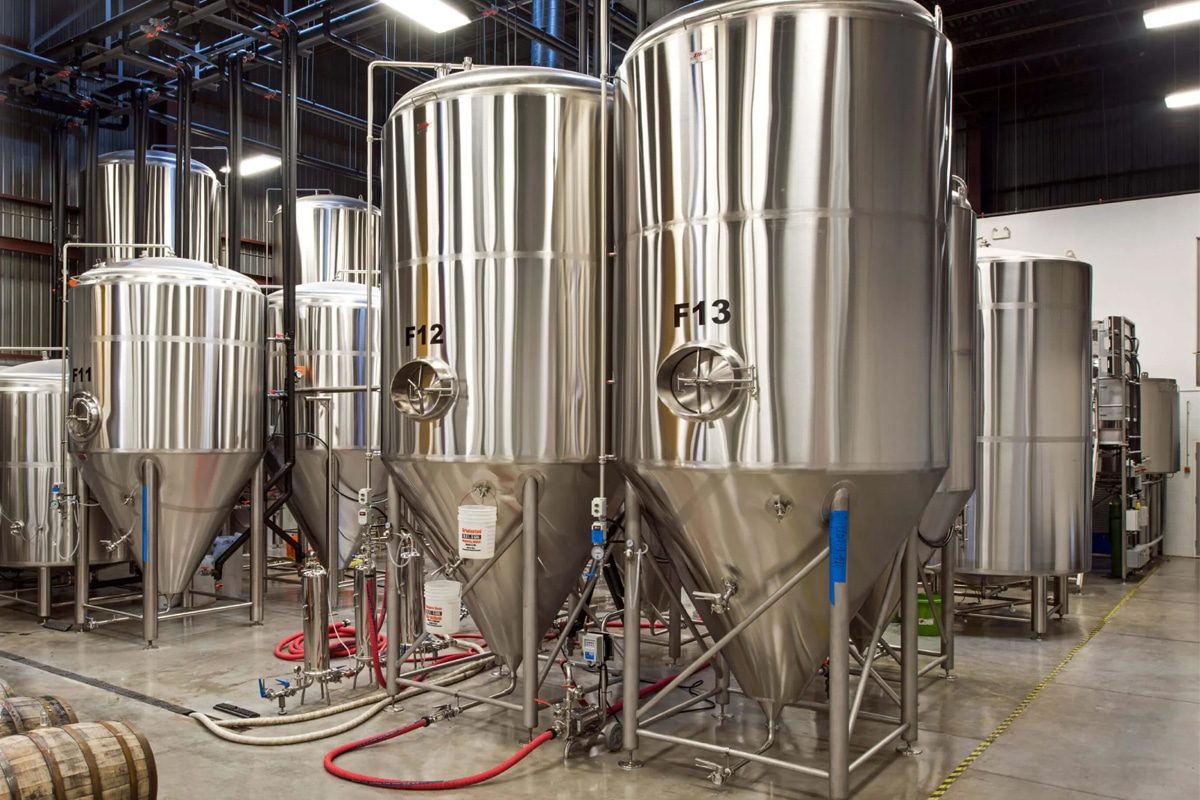
What Is a Fermentation Tank?
In gastronomy and industry, a magical process unfolds that has shaped the flavor and texture of our favorite foods and drinks for centuries: fermentation. At the heart of this transformative alchemy is a vessel that plays a key role in the creation of everything from beer and wine to yogurt and pickles: the fermentation tank. In this article, we’ll delve into the intricacies of fermentation tanks, exploring their purpose, design, and the important role they play in the alchemical process of turning simple ingredients into extraordinary delights.
Comprehensive Guide
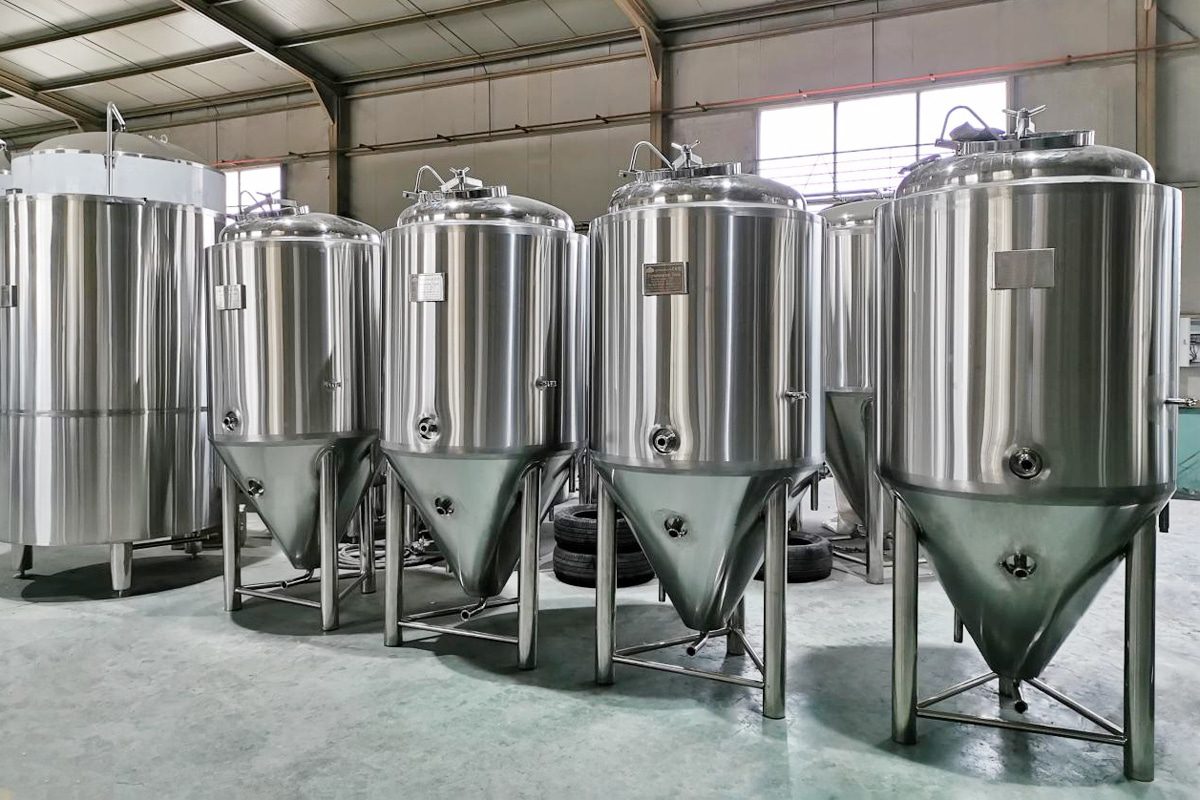
Fermentation Basics
Fermentation is an ancient and transformative process, nature’s way of converting sugar into countless valuable products. Essentially, fermentation is a biochemical reaction facilitated by microorganisms such as bacteria, yeast, or fungi. These microbes break down sugars or carbohydrates in the absence of oxygen, producing various compounds such as alcohols, acids, or gases.
The Role of Microorganisms
Microorganisms are the unsung heroes of fermentation, initiating this extraordinary process. For example, yeast is crucial in beer brewing. It consumes sugar and produces alcohol and carbon dioxide as by-products, giving the drink its unique character and effervescence. During dairy fermentation, specific bacteria convert lactose into lactic acid, which changes the taste, texture, and nutritional quality of dairy products such as yogurt and cheese.
Fermentation Conditions
For fermentation to proceed successfully, several environmental factors play a crucial role:
- Temperature: Different microorganisms thrive within specific temperature ranges. Controlling temperature helps promote the growth of desirable microorganisms and prevents the proliferation of unwanted microorganisms.
- pH: The acidity or alkalinity of the environment affects microbial activity. Adjusting pH facilitates the growth of specific microorganisms.
- Nutrient Availability: Microorganisms require certain nutrients to thrive. Fermentation media often contain additional nutrients to support the growth and activity of microorganisms.
- Anaerobic Environment: Fermentation occurs primarily in the absence of oxygen. Oxygen hinders the growth of some fermenting microorganisms, so anaerobic conditions are required.
Fermentation Products
Fermentation products vary greatly depending on the microorganisms involved and the raw materials used. Some common products include:
- Alcoholic Beverages: Yeast ferments sugars in grains or fruits to produce alcohol, resulting in beverages such as beer, wine, and spirits.
- Dairy Products: Bacteria ferment lactose, enhancing flavor and texture, resulting in yogurt, cheese, and other fermented dairy products.
- Acids And Gases: Fermentation produces various acids (such as lactic acid in sauerkraut) and gases (such as carbon dioxide in bread making) that contribute to the taste, preservation, and texture of foods.
The Meaning of Fermentation Tank
Fermentation tanks provide the necessary controlled environment for these microbial activities to flourish. These vessels regulate factors such as temperature, pH, and nutrient availability, ensuring optimal conditions for the desired fermentation process.
At its core, fermentation is a mesmerizing biochemical dance choreographed by microorganisms, and fermentation tanks act as the stage for this complex performance, allowing us to harness the transformative power of nature to create a range of delicious and essential products.
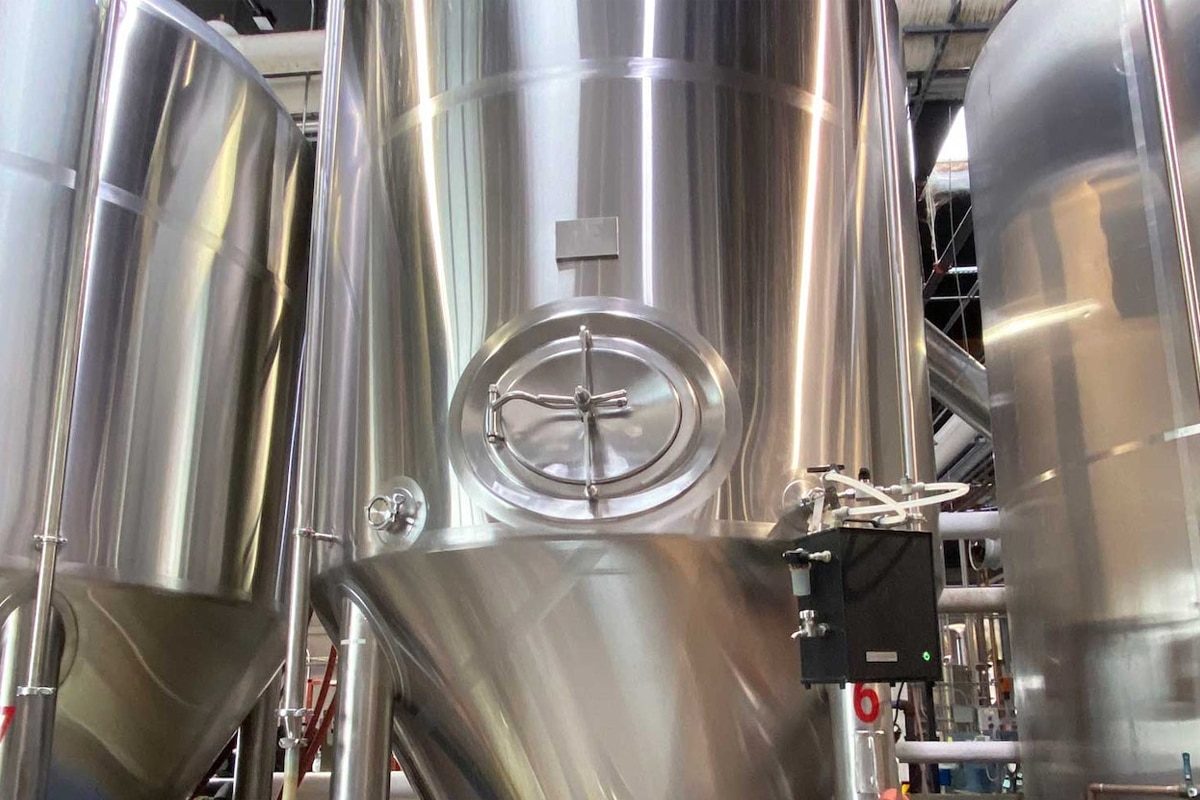
Fermentation Stage in Fermentation Tank
In the fermentation tank, the alchemical journey of transforming basic ingredients into complex and delicious creations unfolds through different stages. A fermentation tank is a vessel built specifically for this transformation, consisting of a series of stages that guide the raw material through a remarkable evolution.
- Inoculation: The fermentation process begins with the inoculation phase, where a specific microbial culture is introduced into the fermentation tank. These cultures are carefully selected for their unique characteristics, which influence the flavor, aroma, and character of the final product.
- Feeding The Microbial Community: In the fermentation tank, the rich mixture of raw materials acts as food for the microorganisms. These ingredients are often rich in sugars or carbohydrates, which fuel the metabolic processes of the microorganisms, initiating fermentation.
- Oxygen-Free Atmosphere: Fermentation is anaerobic in nature, meaning it occurs in the absence of oxygen. The fermentor creates an oxygen-free environment, ensuring optimal conditions for the selected microorganisms to thrive and perform their transforming functions.
- Temperature Management: Temperature plays a key role in shaping fermentation results. The fermentor is equipped with a temperature control system that allows the operator to regulate and maintain the ideal temperature of the microbial community. This precision ensures a harmonious and efficient fermentation process.
- Stir Well: Uniformity helps maintain consistent fermentation. The stirring system within the fermentor ensures the even distribution of microorganisms and nutrients throughout the culture medium. This consistent mixing promotes uniform fermentation helping to achieve the desired product quality.
- Monitoring And Adjustment: Modern fermentation tanks are equipped with advanced monitoring systems. These systems allow operators to track critical parameters such as temperature, pH, and fermentation progress in real-time. Operators use this data to make precise adjustments to maintain ideal conditions for microbial activity.
- Peak Fermentation: During this stage, the fermentation process reaches its peak. Microorganisms metabolize sugar, producing various by-products such as alcohol, carbon dioxide, and organic acids. These compounds give fermented products their unique flavors, aromas, and characteristics.
- Ripening And Clarification: After the peak of fermentation, some products undergo a maturation phase in the fermentation tank. This stage allows for further complexity of flavors, while a clarification process can be employed to refine the product, removing any remaining solids for a clearer end result.
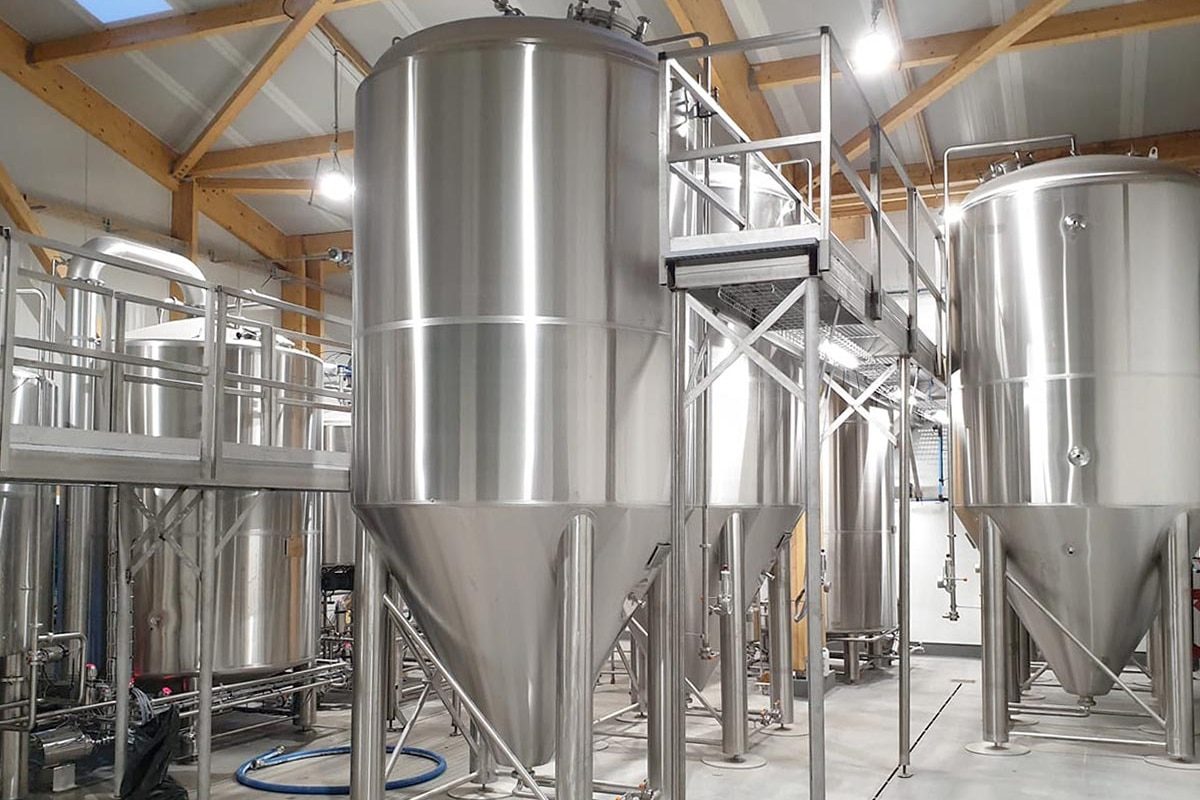
Anatomy of A Fermentation Tank
The complexity and effectiveness of fermentation are closely related to the design and functionality of the fermentor. As vessels that nurture the alchemical process, fermentation tanks are thoroughly analyzed to ensure they provide the best environment for microorganisms to work their transformative magic. Here, we break down the key elements that contribute to fermentation tank efficiency and success:
Material Selection
A common choice for fermentation tanks is stainless steel. This material offers excellent durability, corrosion resistance, and ease of cleaning, which are essential qualities to meet the stringent requirements of microbial fermentation. The inertness of stainless steel ensures that it will not react with acidic or alcoholic by-products, thus maintaining the purity of the final product.
Wooden fermentation vessels still have a place in some traditional practices. Wood can impart unique flavor and character to the final product, affecting the overall image. However, wooden fermentation vessels require careful maintenance to prevent contamination and deterioration.
Design Considerations
Fermentation tanks are available in a variety of designs and can be tailored to the specific needs of the fermentation process. Whether open or closed, vertical or horizontal, the design affects factors such as ease of cleaning, prevention of contamination, and efficiency of mixing within the tank. For example, open systems allow for more interaction with the external environment, while closed systems allow for better control of variables such as temperature and hygiene.
Temperature Control System
Precise temperature control contributes to successful fermentation. Fermentation tanks are equipped with cooling or heating systems, usually in the form of jackets, to regulate and maintain optimal temperatures for the specific microorganisms involved. This feature helps ensure consistency and quality of the final product.
Stirring Mechanism
The efficiency of fermentation depends on the homogeneous mixing of the fermentation medium. Fermentation tanks are equipped with stirrers or agitators to prevent solids from settling and ensure that microorganisms and nutrients are evenly distributed throughout the tank. This homogeneity contributes to a consistent end product.
Size And Scalability
The ability to scale up production while maintaining consistent quality is the hallmark of a well-designed fermentation tank. Fermentation tanks are adaptable to different industries and operation sizes. From small craft breweries to large industrial production facilities, these tanks can be customized to specific needs, making them a versatile asset in the fermentation process.
Monitoring And Control Systems
The advanced fermentation tanks are equipped with advanced monitoring and control systems. Operators can track key parameters such as temperature, pH, and fermentation progress in real-time. This level of precision ensures the repeatability and consistency of the fermentation process.
Sealing Mechanism
In order to create an anaerobic environment, the fermentation tank is equipped with a sealing mechanism to prevent the intrusion of oxygen during the fermentation process. This ensures that the microorganisms can carry out their work without interruption, thus maintaining the integrity of the fermentation environment.
Environmental Impact And Sustainability
Some fermentation tanks incorporate sustainable practices into their design, focusing on energy efficiency and environmentally friendly materials. This emphasis on sustainability is in line with the growing trend of environmentally friendly production methods.
Easy To Clean And Maintain
Hygiene during fermentation is crucial. Fermentation tanks are designed for easy cleaning and maintenance to prevent contamination and ensure the longevity of the equipment. Smooth surfaces and accessibility to clean-in-place (CIP) procedures contribute to the overall efficiency of the tank.
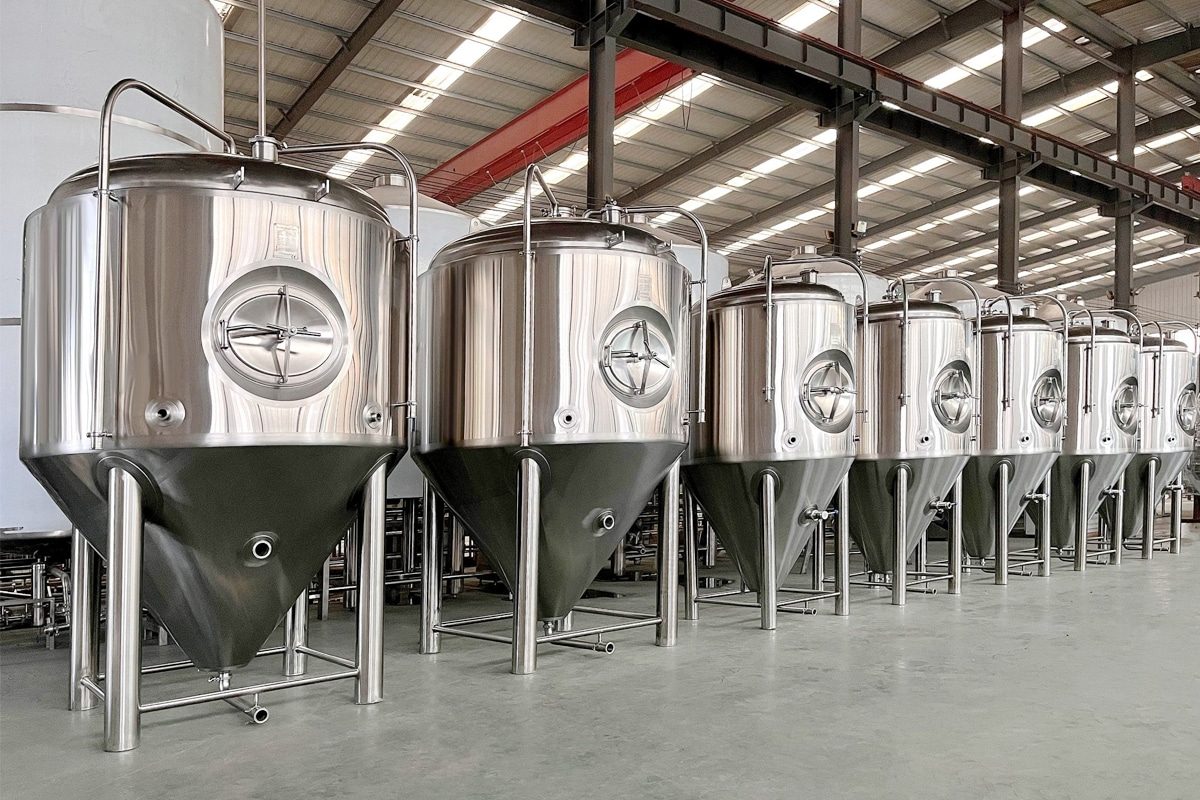
Purpose of Fermentation Tank
The cornerstone of the fermentation process, the fermentation tank is more than just a container, transforming raw materials into a myriad of flavors and aromas. Let’s uncover the multifaceted uses of fermentation tanks that are indispensable in the world of fermentation:
Provide A Controlled Environment
The main purpose of a fermentation tank is to create a controlled environment where fermentation can occur under specific conditions. These conditions include regulating temperature, preventing oxygen exposure, and ensuring consistent mixing of the fermentation medium. By creating an ideal habitat for microorganisms, fermentation tanks enable efficient and predictable fermentation processes.
Optimization of Microbial Activity
Fermentation tanks provide optimal conditions for the reproduction and metabolic processes of selected microorganisms. Whether it’s yeast for brewing, bacteria for making yogurt, or fungi for cheese production, these tanks meet the needs of these microorganisms, encouraging their growth and increasing their productivity.
Achieve Anaerobic Fermentation
Fermentation is essentially an anaerobic process, meaning it occurs in the absence of oxygen. Fermentation tanks are designed with a sealing mechanism to ensure that oxygen does not penetrate into the process. This anaerobic environment allows selected microorganisms to multiply and metabolize sugars without interference.
Optimize Temperature Conditions
Temperature is a key factor in the fermentation process. Fermentation tanks are equipped with temperature control systems (such as cooling or heating jackets) that allow operators to maintain a precise temperature range that is conducive to selected microbial activity. This control ensures that the fermentation process proceeds at the desired rate, thereby affecting the quality and characteristics of the final product.
Promote Uniform Mixing
The stirring mechanism inside the fermentation tank helps achieve a homogeneous mixture. These mechanisms prevent solids from settling and promote an even distribution of microorganisms and nutrients throughout the fermentation medium. Homogeneity helps achieve even fermentation and a consistent end product.
Maintain Hygiene Standards
Hygiene is crucial during the fermentation process. Fermentation tanks are made of materials such as stainless steel, which are not only durable but also easy to clean and disinfect. This ensures a sterile environment, prevents contamination, and guarantees the purity of the fermentation process.
Consistency And Quality Assurance
The purpose of a fermentation tank is to maintain consistency in the fermentation process. By providing a controlled environment with precise monitoring and control systems, these tanks help achieve consistent quality of the final product. This reliability helps meet consumer expectations and industry standards.
Monitoring And Control
Modern fermentation tanks are equipped with advanced monitoring and control systems. Operators can closely track parameters such as temperature, pH, and fermentation progress. This real-time data enables operators to make informed adjustments, maintain optimal conditions, and ensure a successful fermentation process.
Expand Production
Fermentation tanks are designed to accommodate different production scales. From small tanks for experimental batches to large industrial tanks for large-scale production, the aim is to scale up the fermentation process while maintaining the integrity and quality of the final product.
Allow For Maturation And Clarification
Some fermentation tanks have the additional purpose of maturing and clarifying the product. After the peak of fermentation, certain products can be retained in tanks for further flavor development and refinement. A clarification process can also be used to obtain a clear and polished final product.

Type of Fermentation Tank
Fermentation tanks are versatile vessels at the heart of the fermentation process and come in a variety of types and designs to meet the specific needs of different industries. These fermentation tanks vary in structure and function to meet the unique needs of different fermentation processes. Here are some common types:
Open Fermentation Tank
Open fermentation tanks do not have a sealed top. Typically used in traditional brewing and certain beer brewing methods, these fermentation tanks promote natural fermentation due to exposure to surrounding microflora. While it provides a connection to ancient methods, it also requires careful monitoring to prevent contamination.
Closed Fermentation Tank
Closed fermentation tanks are designed with a sealed top and provide a controlled, sealed environment compared to open fermentation tanks. This design minimizes the risk of contamination, allows precise regulation of temperature and pressure, and is commonly used in the production of beer, wine, and other beverages that require a sterile environment.
Conical Fermentation Tank
The bottom of the conical fermentation tank is conical, which facilitates the collection and removal of sediment during the fermentation process. The conical design, commonly used in beer brewing, simplifies the fermentation and maturation process, allows for easier yeast harvesting, and increases the clarity of the final product.
Cylindrical Fermentation Tank
Cylindrical designs are a classic choice due to their simplicity and effectiveness. These fermentation tanks are commonly used in brewing, brewing, and other industries. It provides uniform mixing of the fermentation medium and is usually equipped with a cooling or heating jacket to control the temperature.
Jacketed Fermentation Tank
Jacketed fermentation tanks are equipped with an outer layer that can be filled with a temperature-regulating liquid. This jacket design allows for precise temperature control during fermentation, making it ideal for processes where maintaining a specific temperature range is critical, such as the production of fine wines.
Horizontal Fermentation Tank
The horizontal fermentation tank is not in the traditional vertical orientation but is placed on its side. This design is commonly used in wineries and breweries to maximize the contact area with the grape juice, thereby affecting the extraction of flavor and color during fermentation.
Stacked Fermentation Tank
Stacked fermentation tanks optimize space by arranging multiple tanks vertically and are especially important in large industrial environments. This design is highly efficient for high-volume production while minimizing the footprint of the fermentation facility.
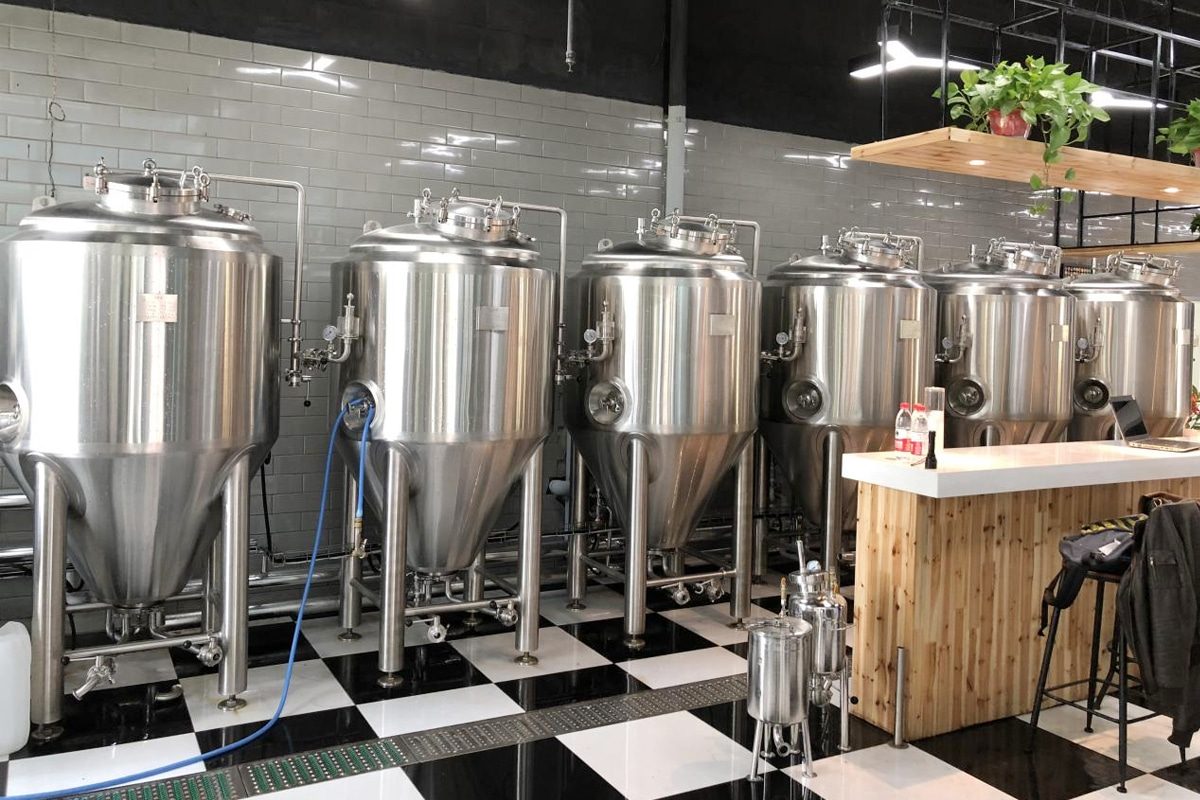
Fermentation Tank Cleaning And Maintenance
The efficiency and success of fermentation depend not only on tank design and functionality but also on strict cleaning and maintenance protocols. Fermentation tanks must maintain a pristine environment to ensure the purity and quality of the final product. Here’s a closer look at the cleaning and maintenance processes involved:
CIP (Cleaning in Place) System
The fermentation tank is equipped with a CIP system, which enables automatic cleaning procedures without disassembly. These systems typically involve cycles of cleaning solution, water flushing, and sterilization to effectively remove residues and microorganisms that may affect subsequent fermentation.
Disinfection Protocol
Disinfection is a key step in maintaining hygiene within the fermentation tank. After thorough cleaning, the tank needs to be disinfected using a food-grade disinfectant or sanitizer. This step eliminates any remaining microorganisms, ensuring a sterile environment for the next fermentation batch.
Mechanical Cleaning And Scrubbing
Mechanical cleaning and scrubbing are required for tanks with stubborn residue or hard-to-reach areas. Use special tools and equipment to manually scrub and remove any buildup or sediment to ensure no contaminants remain inside the tank.
Inspection And Maintenance Checks
Perform regular inspections to assess the condition of the fermentation tank. This includes checking for any signs of corrosion, leaks, or structural defects. Any issues discovered are immediately addressed to maintain the integrity of the tank and prevent potential contamination.
Seal and Gasket Maintenance
Seals and gaskets play a vital role in preventing leaks and maintaining an anaerobic environment within the fermentation tank. Regular inspection and replacement of seals and gaskets can help prevent any breakage that could harm the fermentation process.
Routine Equipment Maintenance
Various components of the fermentation tank, such as agitators, temperature control systems, and monitoring devices, require routine maintenance. Calibrate, lubricate, and service as needed to ensure optimal functionality and accuracy.
Training And Protocol
Proper training is required for personnel involved in cleaning and maintenance procedures. Clear protocols and compliance with industry standards help ensure consistent and effective fermentation tank sanitation and functionality.
Documentation And Record Keeping
Comprehensive recording of cleaning and maintenance activities aids in quality control and regulatory compliance. Maintain records detailing cleaning plans, procedures, and any deviations for traceability and auditing purposes.
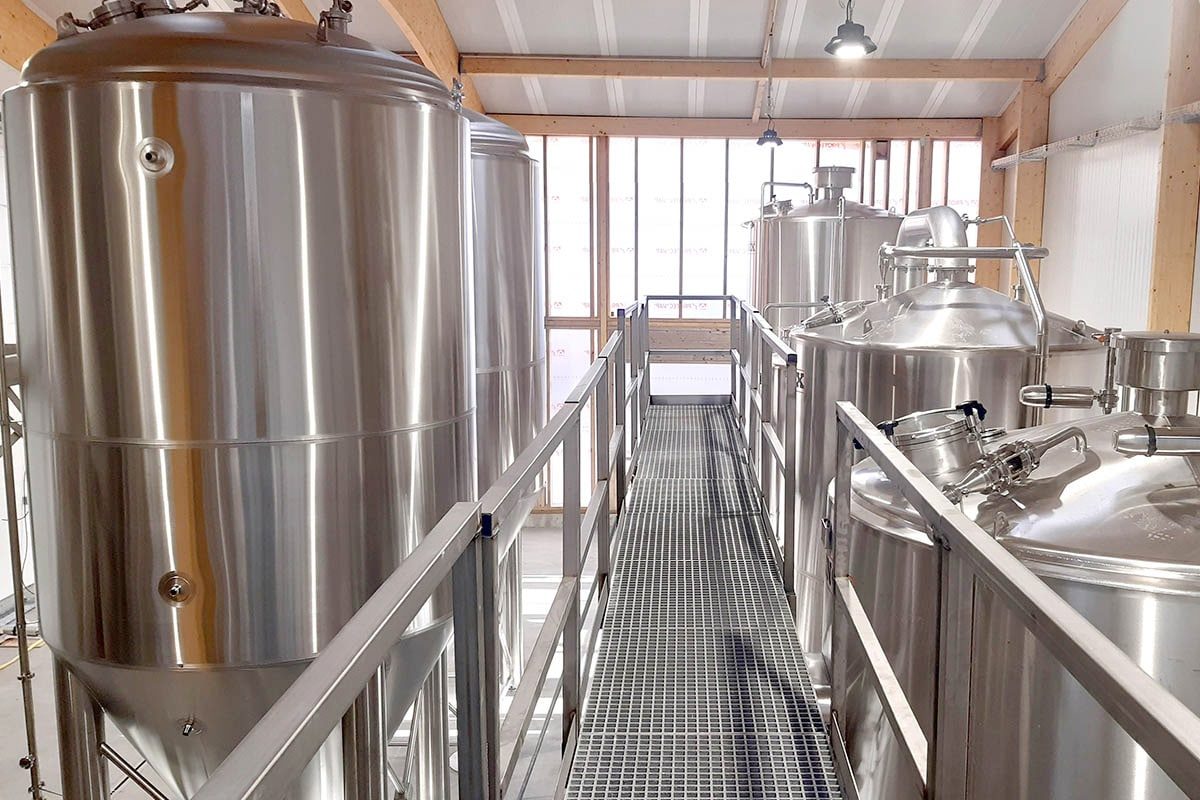
Summary
In the intricate world of fermentation, fermentation tanks become the unsung heroes, transforming raw materials into delicious products. These vessels, whether open or closed, stainless steel or wooden, are at the center of microbial alchemy. From carefully controlled environments to precise temperature regulation, fermentation tanks orchestrate the harmonious dance of microorganisms that shape the unique flavors and aromas of beloved products. In addition to their transformative role, these tanks require meticulous cleaning to ensure purity and consistency. In essence, fermentation tanks embody tradition, innovation, and excellence, silently bearing witness to the timeless magic that transforms simple elements into extraordinary pleasures.
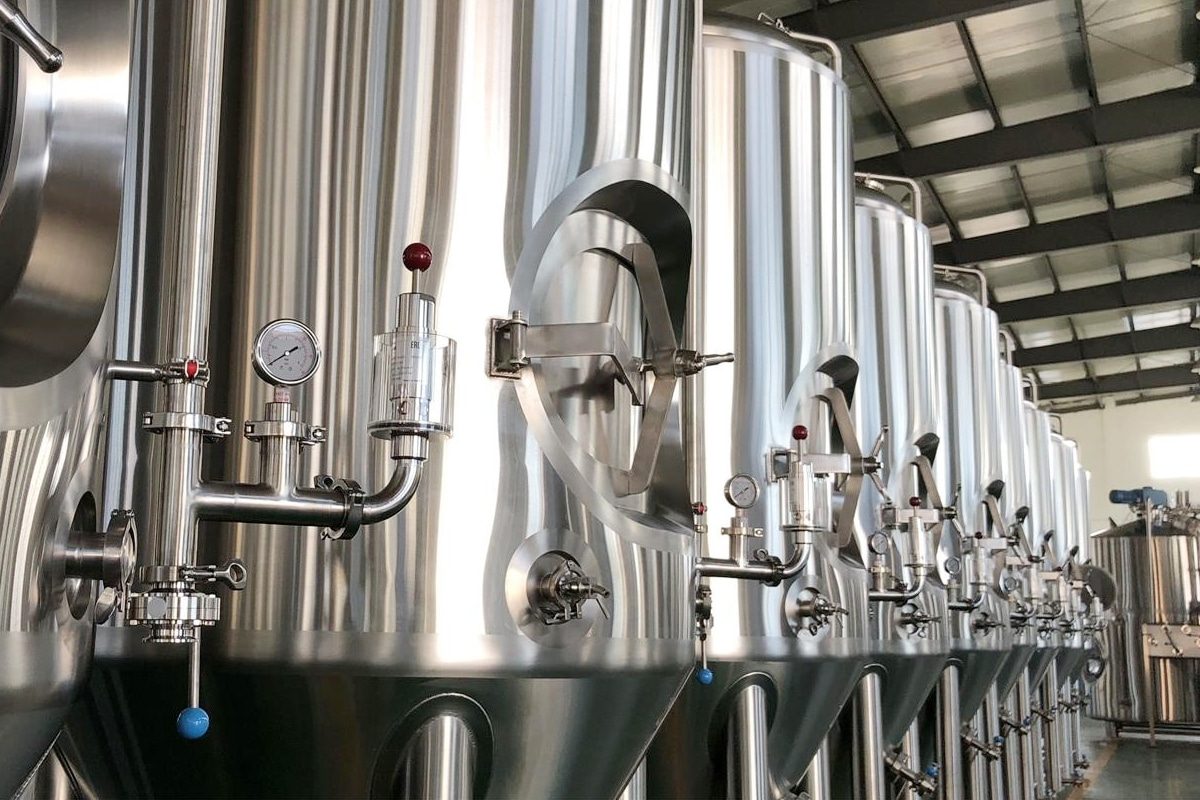
Get Complete Fermentation Solutions
ZYB Craft stands as your reliable partner in the world of fermentation, offering an array of meticulously designed fermentation tanks to meet diverse needs. Our fermentation tanks are crafted with precision, catering to the nuances of different fermentation processes. Whether you seek open fermentation vessels for a traditional touch or closed fermentation tanks for precise control, ZYB Craft has a solution. Our conical fermentation tanks facilitate sediment removal, ensuring clarity in your creations. Explore the options with confidence, as our team is ready to guide you through the selection process. At ZYB Craft, we don’t just offer fermentation tanks, we provide a pathway to elevating your fermentation journey.



